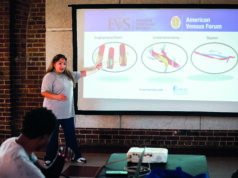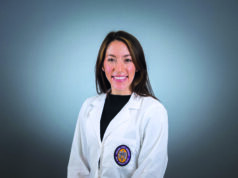

Much has been made of the impending shortage of physicians in the United States, with ominous predictions that it could come as soon as 2030.1
The driving force behind the overall shortage is a menacing convergence of a rising, aging population and an upsurge of chronic disease states such as diabetes and obesity. Not surprisingly, the specialty predicted to suffer the greatest shortage by percentage at each decade in the future is vascular surgery. 2
Edward Arous, MD, Andres Schanzer, MD, and colleagues have eloquently outlined how an increase in the number of vascular surgery training positions can alleviate this burden and rise to meet the demands of our patient population.3
At the same time, however, the Match Data from the 2019 Main Residency match revealed sobering trends for vascular surgery recruitment. For the first time since the advent of the Integrated Vascular Residency programs, there were fewer U.S. medical school graduates applying for positions than those offered.4 Unless there are qualified candidates applying to our programs, it does not matter how many training spots are created; we will not meet the future demand for our services. Further, we must not neglect the traditional fellowship pathway into vascular surgery, which continues to graduate approximately 120 new vascular surgeons per year.3
Fortunately, the Association of Program Directors in Vascular Surgery (APDVS) in conjunction with the Society for Vascular Surgery (SVS) has heard the call. Multiple efforts are currently underway, including:
- Efforts to increase awareness of vascular surgery training at an earlier undergraduate and early medical school level
- Increase the number and effectiveness of vascular surgery interest groups at U.S. medical schools
- Improve the footprint of vascular surgery in medical school pre-clinical curriculum
- Highlight the variety and economic stability of a career in vascular surgery to current general surgery residents
For the modern learner, individual attention and micro-mentoring are keys to success in recruitment and retention. As such, many efforts are best invested at an institutional and regional level where learners have the opportunity to receive this individualized effort with mentors. The regional recruitment concept is at the forefront of APDVS strategy to reach early learners. In 2019, both the University of Michigan and University of Alabama Vascular Society initiated new programs to introduce early learners to vascular surgery.
These events encompassed a single day seminar with concise and limited didactics, a larger and broad panel dedicated to lifestyle, personal well being, and educational discussions followed by hands-on open and endovascular simulation. Efforts are underway to create a template for other institutions and/or regional/state societies to use to initiate similar courses. Further, building off the success of the skills simulation sessions at the Vascular Annual Meeting (VAM), several regional societies have begun hosting skills sessions targeted at potential vascular residents and fellows. Each region will identify a champion among the participants who will receive an automatic bye into the Top Gun Finals at this year’s meeting of the Society of Clinical Vascular Surgery (SCVS).
Perhaps the simplest, most personal way to reach pre-clinical students is through a Vascular Surgery Interest Group (VSIG). These groups typically need one or two faculty champions to serve as content experts and liaison to the students. In a recent survey of APDVS members, the financial and time commitment to these groups need not be substantial; yet, less than half the membership had active VSIG chapters at their institutions.5
The Recruitment of Students and Residents Committee of the APDVS has updated a how-to manual for those interested in starting a VSIG at their institution. Information can be found in the “Careers Tools and Training” portion of vascular.org.
As a culmination of these efforts, the APDVS has designated March 2020 as vascular recruitment month. The SCVS meeting will kick off the efforts with presentations by Anna Boniakowski, MD, PGY-7 integrated resident at the University of Michigan, on the results of the Michigan regional recruiting event, as well as the status of VSIG amongst U.S. medical schools by Eli Robbins, MD, PGY-3 integrated resident at the University of Rochester. The Top Gun Finals at SCVS will crown the national skills competition winner. We will then segue into our first ever VSIG Live! event at the APDVS annual meeting March 26.
VSIG Live! will be broadcast from SVS headquarters via webinar. Case presentations from current trainees will highlight the diversity of vascular cases and a panel of program directors will be present to answer text/email questions from around the country. The intent of VSIG Live! is to allow all U.S. medical students to experience a VSIG meeting and learn more about vascular surgery, even in the absence of a local chapter. The registration will be free, with the only requirement to participate an internet connection. Log-on details will be available soon at vascular.org/career-tools-training/develop-my-training-career. We recommend that any practicing surgeons reading this article be willing to sponsor a simple dinner and host interested medical students at your local school. The event will work best if vascular surgeons take an interest at a local level, which is true of all teaching efforts.
We in the APDVS feel very strongly about the bright future of vascular surgery and are excited to reach our future partners and colleagues. We need your help in getting the word out about all of the ways we can be involved and how students can learn more about vascular surgery. We ask for your help in making vascular recruiting month March 2020 a huge success. Visit vsweb.org/VSIGLive.
References
- https://www.aamc.org/news-insights/press-releases/new-findings-confirm-predictions-physician-shortage
- Satiani et al JVS 2009
- Arous et al JVS 2018
- Main Residency Match Stats 2019
- APDVS Survey











